4PCS Silicone Heater Mat, Icstation Rubber Heating Mat 12V 25W Electric Blanket Flexible Mat Constant Temperature 80X100mm
$23.99 Original price was: $23.99.$16.79Current price is: $16.79.
SKU: B075WVPP5Y Categories: Building Supplies, Heaters & Heater Accessories, Hvac, Tools & Home Improvement Tag: IS
- Free Shipping over $25
- Fast & reliable delivery options
- Enjoy top quality items for less
- Multiple safe payment methods

- Material: Rubber
- Brand: IS
- Color: Red
- Frequency: 50 MHz
- Voltage: 12 Volts
- 【Easy to use】The silicone rubber heater can be directly wrapped on the surface of the object to be heated when it is used, and has excellent electric strength, perfect heat transfer efficiency and excellent resistance stability. Safe to use and stable performance.
- 【Wide application】 It can be used as auxiliary heating for refrigeration protection and air conditioning compressors, motors and other equipment, and is widely used in industrial equipment, medical equipment, etc.
- 【Parameter】Working Voltage: DC 12V; Power: 25W; Mat Size: 80 X 100mm/ 3.15 X 3.94inch(L*W); Power Tolerance: ±5%; Insulation Resistance: 50 MΩ; Voltage Withstand Strength: 1500v/5s
- 【Note】The heating film itself cannot control the temperature. You can use it with a temperature controller.
| Size | 80X100mm |
|---|---|
| Number of Items | 4 |
8 reviews for 4PCS Silicone Heater Mat, Icstation Rubber Heating Mat 12V 25W Electric Blanket Flexible Mat Constant Temperature 80X100mm
Add a review Cancel reply
Related products
-30%
Rated 4.50 out of 5
-30%
Rated 5.00 out of 5
-36%
Rated 4.67 out of 5
-30%
-30%
Rated 4.64 out of 5
-30%
Rated 4.64 out of 5
-30%
Rated 4.29 out of 5
-30%
Rated 4.43 out of 5


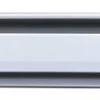

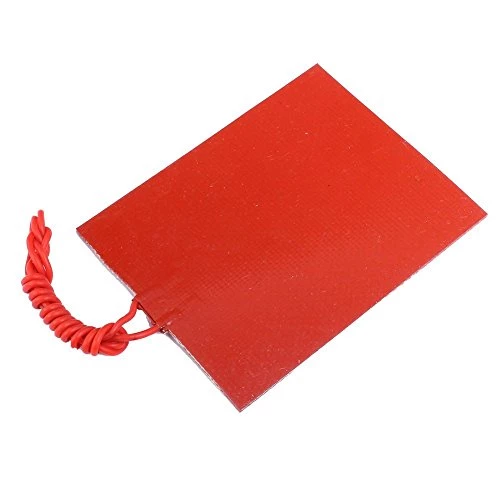
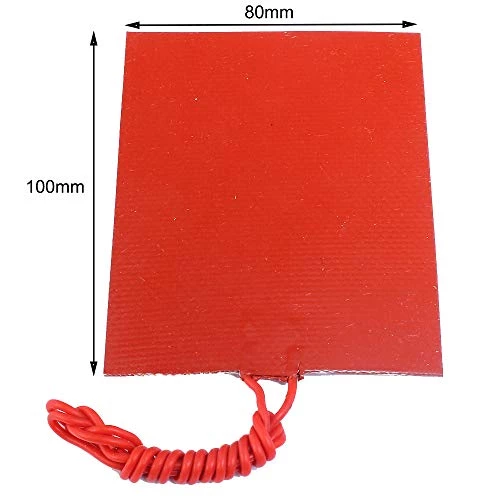

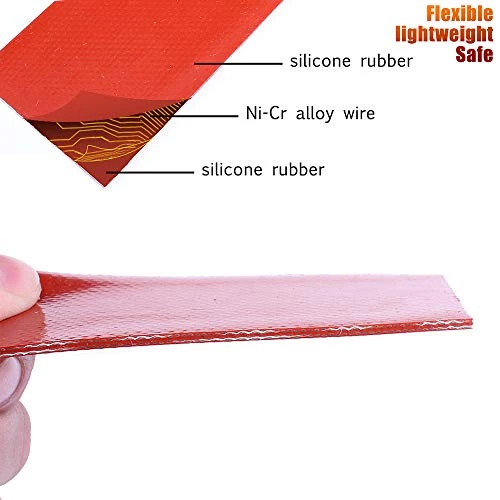
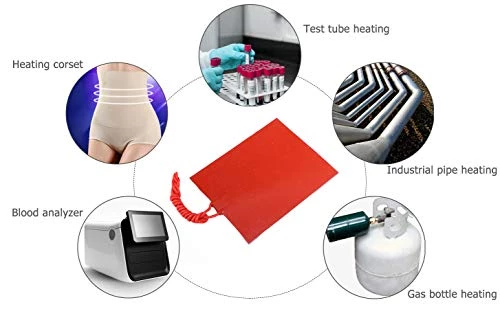
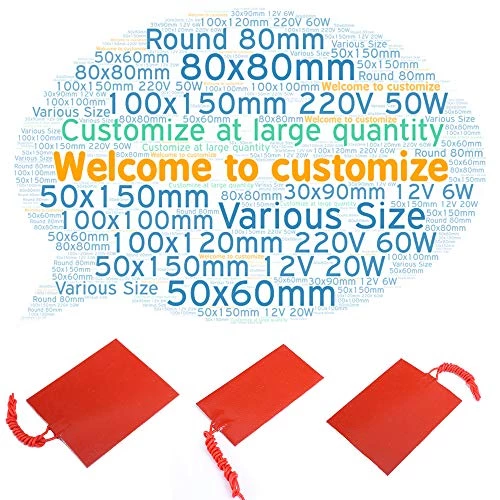

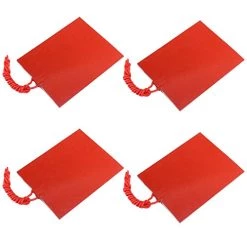
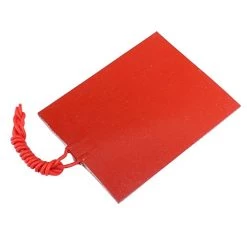
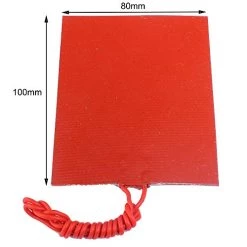
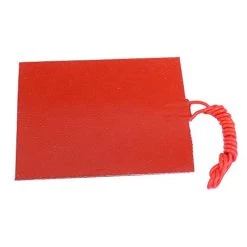
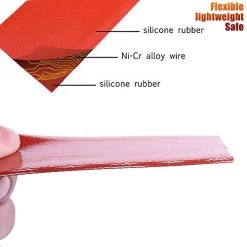
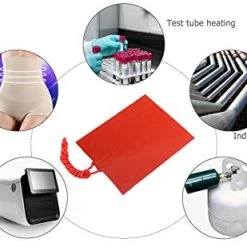
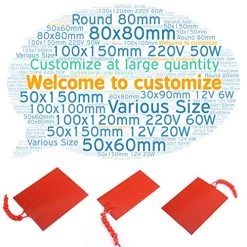
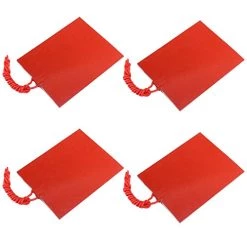
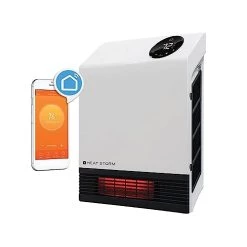
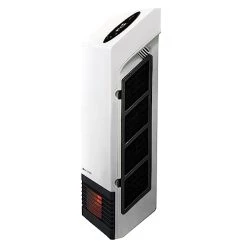
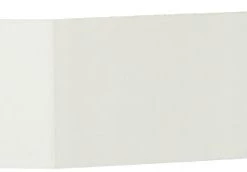


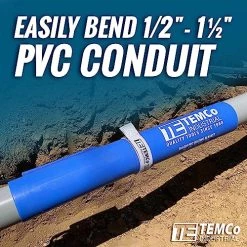
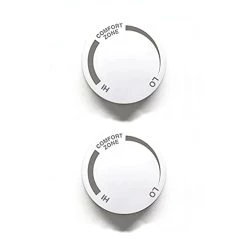
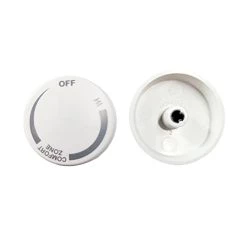


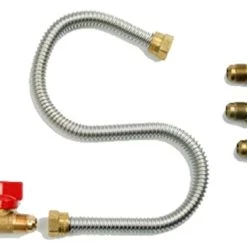
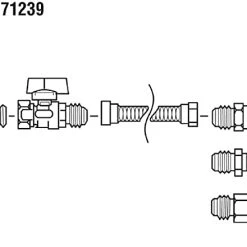
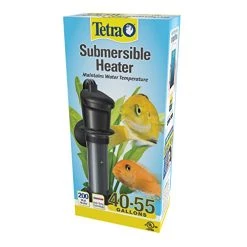


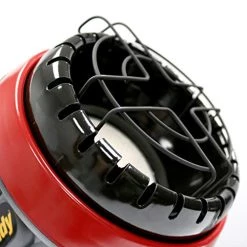
KurTX –
Headline sums it up, just figure I might add that if you are desiring to use these for “personal heating” applications, you should most definitely disregard the label on these pads in the sense that the label should *not* be viewed as requiring 12v or 25w for operation, far from it as those are simply what these are rated for. Running 12v through these while using them as, say a localized back heating pad will literally boil your flesh, but I also mean that as a good thing too! Lol. It’s a good thing because if you’re using these in a situation like camping where electrical power is often only available in a finite amount available batteries (assuming you’re not some camping & outdoors-diva who has lotza $$$$) then you don’t have to fret whatsoever about the potential logistical hurdles of supplying a 12v power demand with a high run-timecapacity since 2x li-ion batterys in series with their nominal 7.4-8.4 volts will provide *ample* heat & likely past pain-threshold for many, for that matter. That said, it’ll still be drawing ~1.3 amps at that voltage, so wiring a thermistor in series set for your ideal cozy temp will one-step optimize & simplify effieciency & comfort while entirely eliminating any needed “dialing in” permanently!
davek –
Lithium Iron Phosphate (LFP) batteries are terrific but can only be charged when they are above freezing. In cold-weather camping, this can be a problem as well as an RV in storage for long periods in cold climates. I have used these pads with two different thermostats and they work very well. I attach two of them in series because I found they got too hot when used individually. I used a Morningstar Relay driver to drive a small cheap relay for one set up. That relay driver can be set up to run multiple sets of pads so I had one pad set turning on at 42F and the other turning on if the battery temp got to 38F. Usually, only one set turned on and it worked perfectly to keep a large (430Ah) LFP battery comfortably above freezing.A less expensive option (Morningstar Relay drivers are over $100) I’ve also used are snap disk thermostathttps://www.amazon.com/Thermostat-Switch-Circuit-Large-Flange/dp/B0026S6WGK/ref=sr_1_2?crid=1AKM94LJTK81Q&keywords=snap+disc+thermostat+switch+on+at+35&qid=1671214245&sprefix=snap+disc+thermostat+switch+on+at+35%2Caps%2C189&sr=8-2wired in series with the pads and hooked to the battery that is being warmed. They allow power to flow to heating pads when ambient temp reaches 35F and turn pads back off when temp climbs above 45. For $14 for the thermostat plus around $22 for 4 pads and a bit of wire you get an effective battery warmer that actually works.
Will –
I wrapped one of these around the 12 volt freshwater pump in my RV, wired to a thermostat, to keep the pump from freezing on winter nights. I also put a rheostat on it to control the voltage, as it heats up to over 300 degrees Fahrenheit on full voltage. After playing with different settings on the rheostat, I got it to perform consistently at ~200 degrees. Very useful for my purposes.
Paul Petty –
Based on a previous review, I got a 4 pack to keep my trailer battery warm. I’m still waiting for a thermostat, so meanwhile I connected 2 in series an connected to the battery. It heated to about 60 degrees F and maintained there. (The outside air was at freezing or below.) with a meter, I measured about 800mA current, although the battery reported 1.2A through the Bluetooth app.
Neil Millar –
Keeps my Lifepo4 warm
J Callaci –
Here’s the deal. At 70f in the shop, they got to 251F on a bench. Someone mentioned wiring in series. Here’s the outcome from that. They got to ~125 F. No problem just an observation. Also when 2 25 watt pads are wired in series, the current draw is only 13 watts or so. I put them in a HF trailer tongue battery box. At 28 degrees or a bit lower, they seem to keep it warm enough for my lithium battery.
Lee A. –
These get so hot that I can’t even hold them in my hands. That could be a good thing for a certain applications but I wanted to use these to keep my lithium iron phosphate batteries warm in the winter so they don’t accidentally get charged below 32° Fahrenheit which would ruin the batteries. I didn’t realize they would get so hot so I’ll try to find another application for them so be aware that these get super hot. I should have gone with a lower wattage heating pad for what I needed. No complaints, they were reasonably priced. Maybe I’ll heat up some water with them or something.
3DayPriest –
…the voltage drop across the NiCr wire seems to make the pads hotter toward one side than the other. Perhaps it’s due to voltage drop and can’t be avoided???